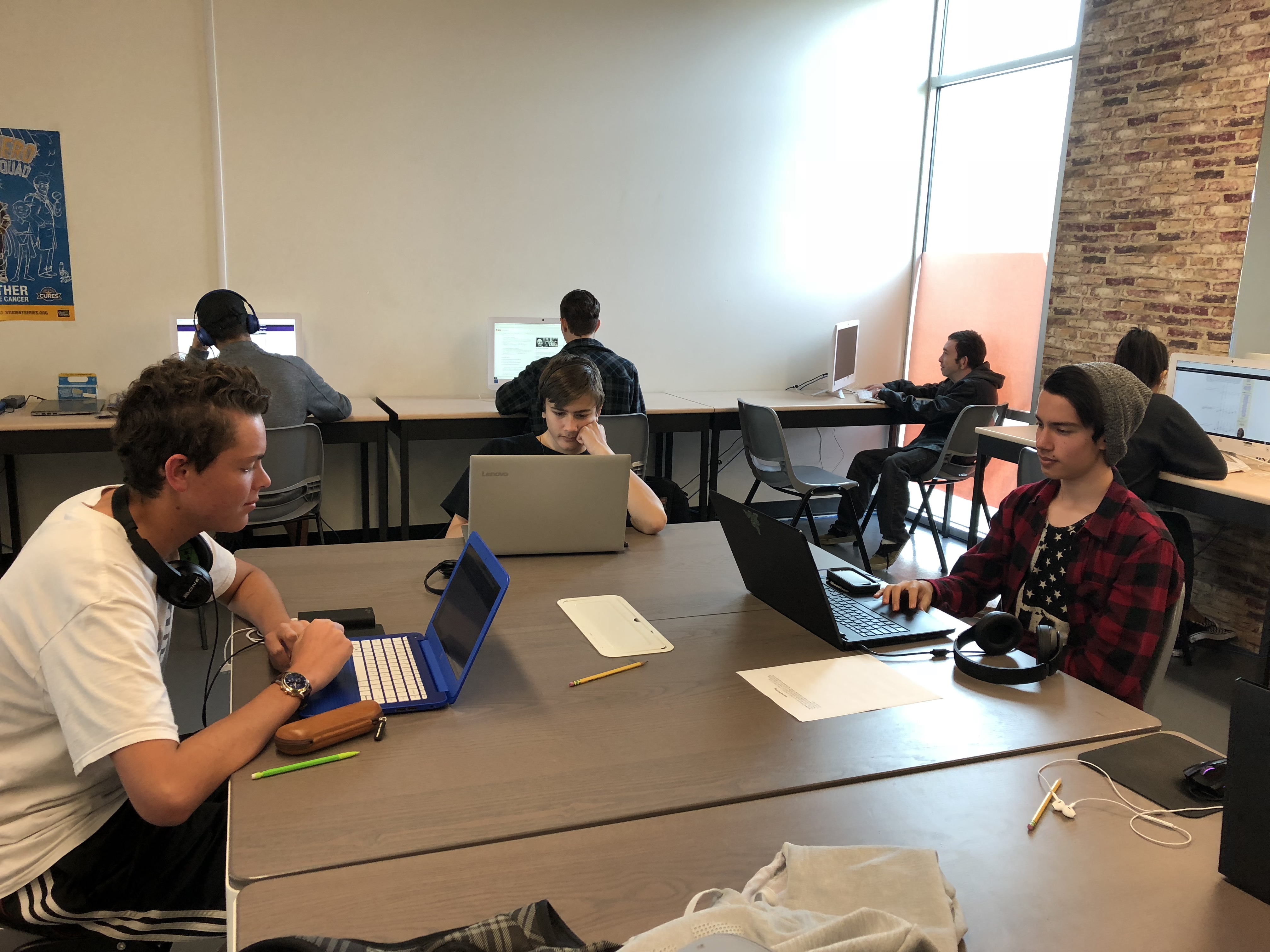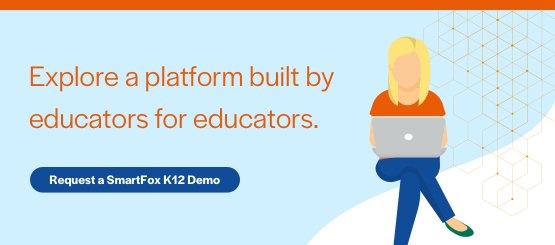
Whether you realize it or not, K-12 public schools and technology are on a collision course. As school leaders seek more efficient, more effective learning paths, advanced education technology is evolving to fill in learning gaps.
Unfortunately, many public schools are jumping into online learning only to discover the technology they’re using is stuck somewhere in the distant past.
We’re here to help your school peer into the future and pick technology that’s on a straight course toward learning progress. In this article, we dive into technology’s role in the future of K-12 public schools and highlight what to watch out for if you want your school to lead the way.
How Is Technology Affecting K-12 Public Schools?
The impact of technology on K-12 public schools has become crystal clear in recent years. Even before the pandemic changed everyone’s way of life, public schools began relying on online education systems more and more. In addition to waking up to the benefits of online learning, many school leaders are discovering a few key facts about technology:
Intuitive online programs are a must.
Now, with programs such as Zoom skyrocketing in popularity, it’s easier than ever for schools to deliver seamless education to students from anywhere. Zoom use jumped 30-fold in April 2020 alone. There's a good reason for this rise in Zoom’s popularity: As more and more schools turn to online education, it’s becoming a reliable tool that instructors can pick up without needing much additional training.
Mobile-readiness is now essential.
Leaders of K-12 public schools are quickly becoming alert to the value of mobile-ready online education. In addition to being extremely popular among teens, mobile devices are the only learning option for many students. In fact, one study found one in four learners from disadvantaged backgrounds doesn’t have access to a computer.
As public schools rush into online education, leaders are realizing that it is essential to find online learning systems that cause minimal friction and support everyone involved in the process.
Is Education Technology Out of Date?
The bad news? Most education technology platforms aren’t prepared to meet the growing demand for online education.
Some of the most popular learning management systems (LMSs) out there are also some of the most frustrating for education leaders. For instance, Blackboard, Moodle, and Schoology all are notorious for being poorly designed and difficult to use.
The result?
Any time students struggle to do simple tasks, such as uploading assignments, accessing information, or waiting for pages to load, it disrupts learning. And if you want to examine the consequences of outdated education technology, poor usability is just the tip of the iceberg.
What Are the Problems with Outdated Technology in K-12 Public Education?
When it comes to K-12 public education, outdated technology may have an even deeper impact on learning than you realize. There are a few common issues that come up when your school is trying to conduct online education with traditional systems:
Unintuitive Learning Management Systems
A school’s LMS plays a critical role in online learning. For K-12 public schools, it’s the program instructors use to deliver education. It’s also the system that students and parents use to interact with learning materials and school leaders. Unfortunately, most outdated technology has left online learners—and leaders—stuck with unintuitive LMSs. These LMS obstacles halt learning and frustrate everyone involved.
Data Messes
Outdated technology also causes turmoil for K-12 public schools behind the scenes. Most traditional online learning platforms only allow limited access to reporting data. Plus, because most feature disconnected LMS and student information system (SIS) programs, school leaders are left hopping from login to login to manually input or gather student information.
Ultimately, the burden to fix these data messes usually falls on your school’s IT staff. In turn, IT pros have to try to cobble together technical solutions that were never meant to work together in the first place.
What New Classroom Technology Is Out There?
What most K-12 public school leaders don’t realize is that there are technological solutions designed to address these common problems and promote seamless learning. Here are some features that are available with the latest online learning technology:
Platforms with Connected LMS and SISs
There are now online learning platforms that include an LMS + SIS integration. This integration can save massive amounts of time for your leaders and improve the online learning experience for students.
When information streams into a single source, it’s easier for your leaders to access the data they need to make sound strategic decisions. At the same time, your school’s leaders don’t have to waste time scraping together information, logging into multiple accounts, and plugging in manual data. All in all, integrating these systems makes for a much easier day for your online learning team.
Programs with Easy Zoom Integration
Zoom has earned a reputation in recent years for being an intuitive tool that isn’t intimidating for instructors to use. Now, some online learning platforms automatically come with a Zoom integration. That means your instructors don’t have to waste time relearning new programs or fumbling through stock learning management systems that are hard to use.
Programs with Built-In Analytics
The best online learning systems can now record analytics automatically within your learning management system. That lifts a huge burden off of your staff and opens up a whole new world of student insights. Your leaders can use deep performance data to identify academic barriers and promote more targeted learning. Access to these analytics also provides the raw materials administrators need to make strategic decisions that drive progress for the whole school.
Systems with Automated Reporting
Gone are the days when administrators needed to call on specialists to access reporting data. In fact, some of today’s online learning platforms automatically assemble data so reports are ready to be passed on to regulators, parents, or other sources. Within a better-designed student information system, these essential reports are clearly laid out, so administrators can spend less time gathering data and more time steering positive educational progress.
Smart Sessions
It’s no secret that students need personalized attention to learn effectively. Today’s technology delivers this personal attention without relying on overworked instructors to exert themselves even more. Some platforms include Smart Sessions that adjust to each learner’s needs and allow students to advance at their own pace.
Simpler Enrollment and Marketing
Advanced online learning programs simplify enrollment and marketing by integrating with third-party software. In most cases, if you already have contacts stored in a marketing program or enrollment system, these advanced systems let you keep using those programs within your online learning platform. This all saves your team time and spares them the headaches of starting recruitment from scratch in an unfamiliar program.
Learn More About the Latest in K-12 Education Technology
Interested in learning more about the latest online learning technology? SmartFox K12 is an online learning platform that was built by educators, for educators. Our team saw firsthand the problems traditional online learning platforms were causing schools, so we designed a system that lifts the burden off of education leaders and elevates online learning.
Want to see how SmartFox K12 works? Download our guide, How K12 Online Learning Works, to learn more.
About the Author
-1.jpeg)
Dr. Jessica Spallino
Jessica has a demonstrated track record of building schools that are forward-thinking, high-performing, and often unconventional. She is particularly experienced at building online and blended learning charter schools, and has a passion for improving K-12 education through new and innovative models and concepts. She’s regularly asked to speak on change management and building positive and innovative cultures in schools and in the workplace. Jessica holds a BA in English, an MA in Educational Leadership, and holds PhD in Curriculum and Instruction from New Mexico State University.


